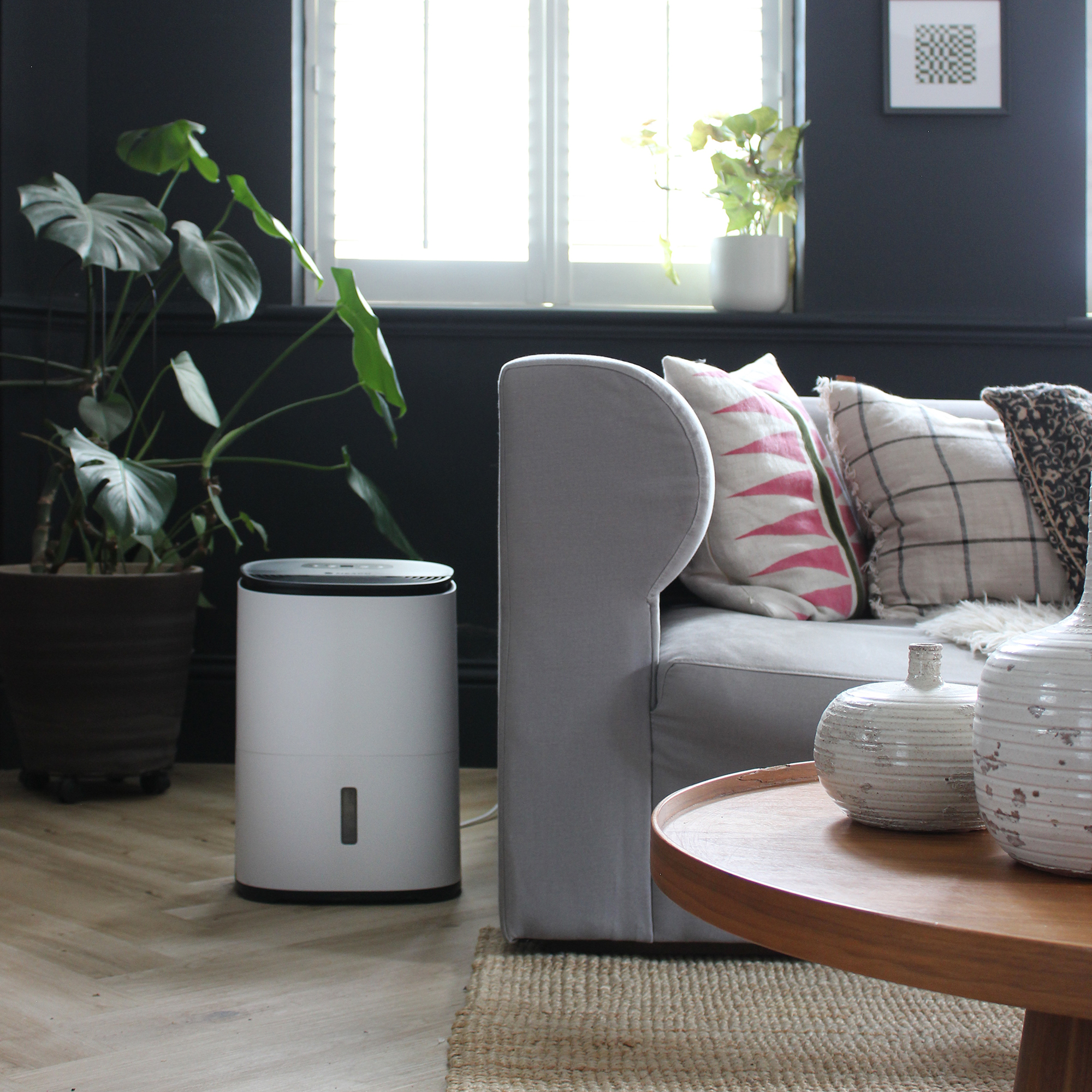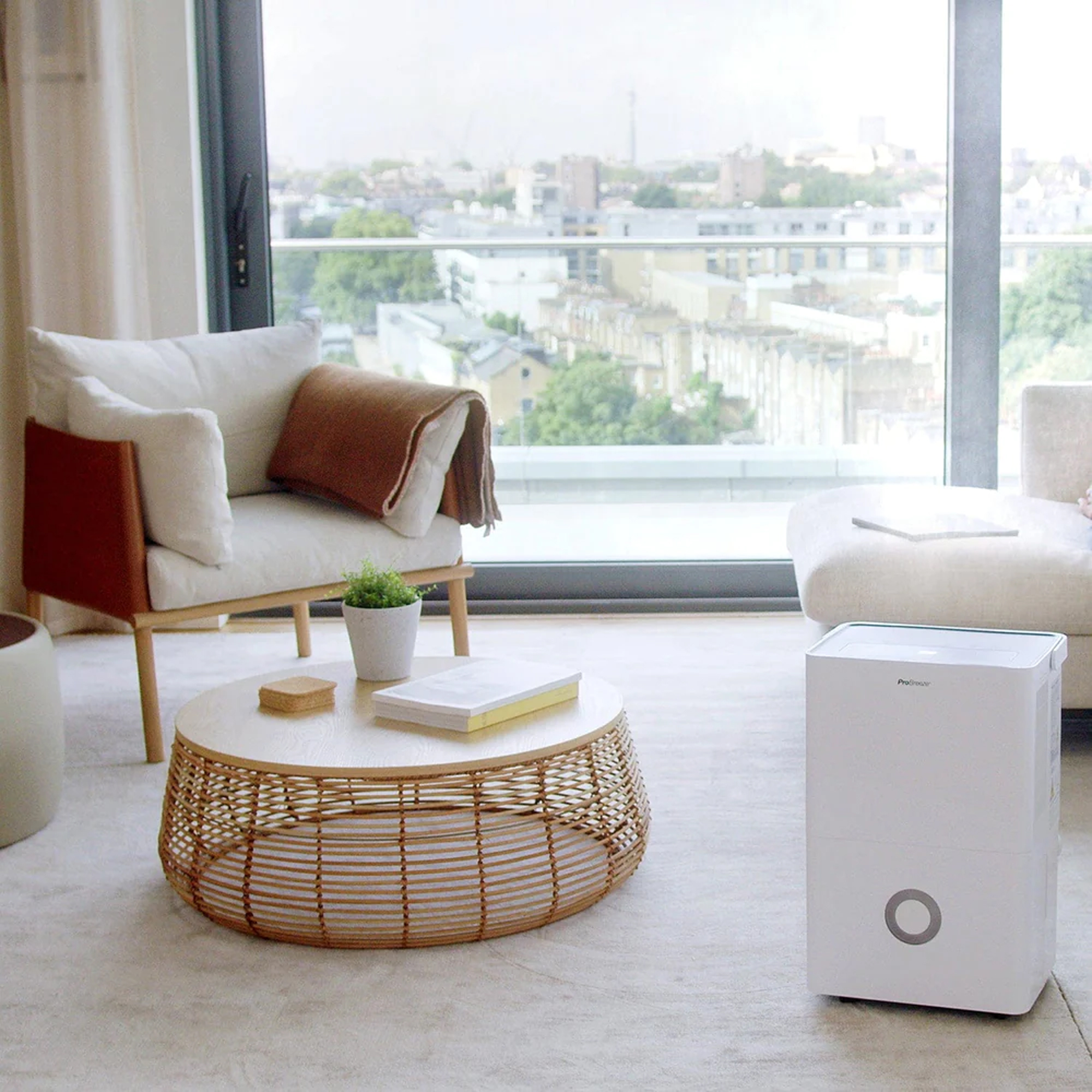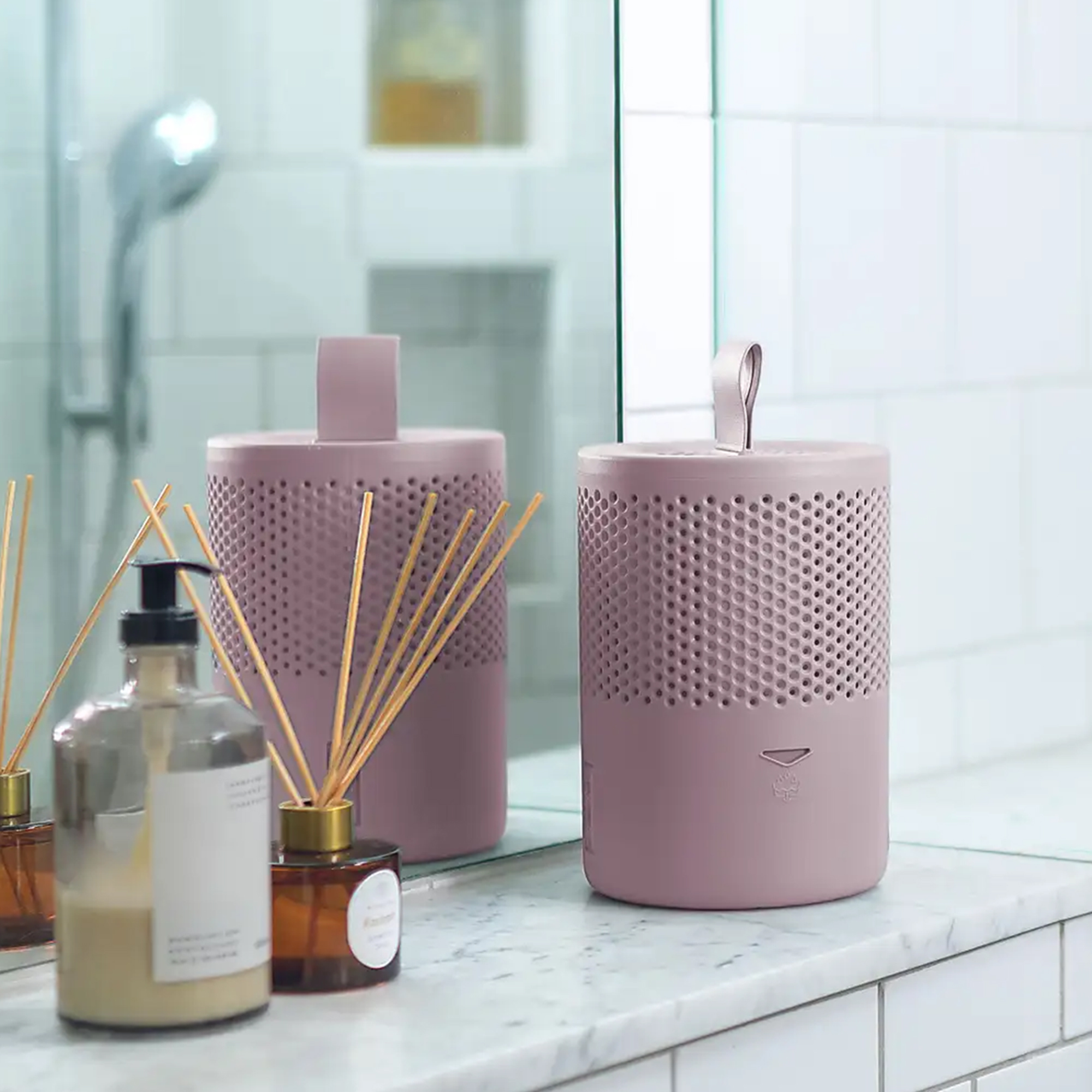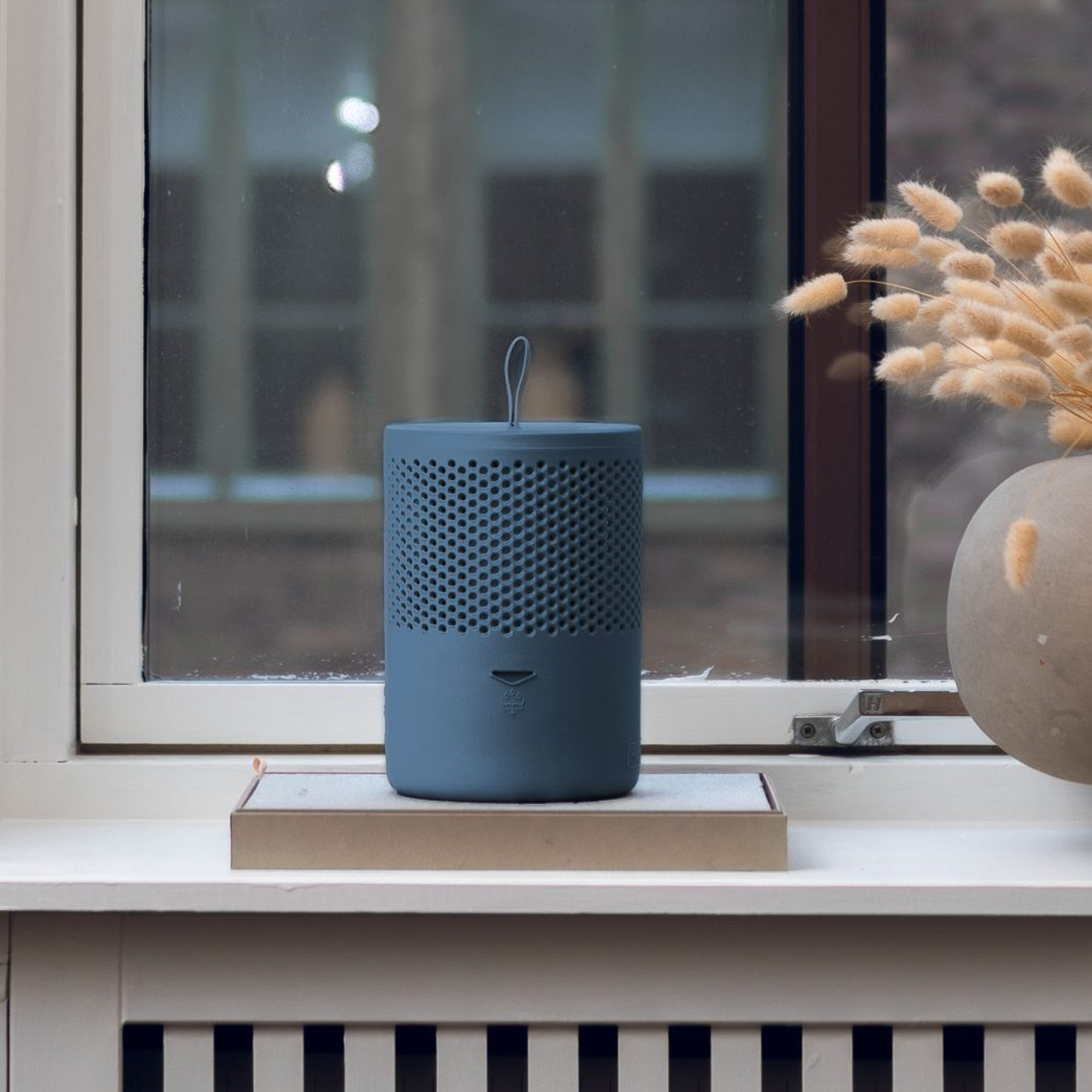
If you want to reduce the amount of moisture in your home, you’ll be happy to know that it’s now easier than ever. But you’ll also want to consider whether dehumidifiers or moisture absorbers will suit your home better.
At Ideal Home, we’ve had the pleasure of testing the best dehumidifiers on the market. Through these rigorous testing sessions (and the fact that the whole team has at least one of these dehumidifiers in their home), we’ve fallen in love with its moisture-absorbing abilities. But it’s also important to realise that it’s not the only product that can get rid of damp and reduce condensation in your home.
Moisture absorbers are a budget and portable alternative to this best-selling electrical appliance, but can a moisture absorber live up to the hype of dehumidifiers? Well, we’ve done the research, so you don’t have to. It’s time for the dehumidifier vs. moisture absorber debate.
Dehumidifier vs moisture absorber
To protect your health and home, you should keep it at the perfect humidity. And while dehumidifiers and moisture absorbers can get rid of damp, there’s no denying that they’re two very different products. That’s why we’ve decided to compare the two regarding efficiency, ease of use, and affordability to see which product comes out on top.
Consistently coming top in the class, the MeacoDry Arete One Dehumidifier has been our number one dehumidifier for a few years now. Not only is it quiet, easy to use, and energy-efficient, but it also comes with a laundry mode to dry your washing indoors.
The Absodry Moisture Absorber may look like a stylish speaker, but it actually has the ability to remove moisture from spaces as large as 50m3. Filled with a 600g of moisture-absorbing crystals, it should also last around three months before you need to refill it.
Dehumidifier vs moisture absorber: What’s the difference?
In essence, a dehumidifier and a moisture absorber are very similar. Both gadgets pull moisture from the air and trap it in the appliance to reduce condensation and dampness in your home.
However, they’re also very different. Nicholas Auckland, heating and energy expert at Trade Radiators, explains, ‘Dehumidifiers are electric devices, while moisture absorbers are non-electric.’ This means a dehumidifier will only work when plugged in, while a moisture absorber can be placed anywhere in your home.
The way a dehumidifier and moisture absorber work is also very different. To reduce the humidity levels in your home, a dehumidifier circulates the air, drawing out the moisture as it does so.
Joshua Warren, dehumidifier expert at AO.com, says, ‘Dehumidifiers are very handy appliances for households, particularly those who suffer with allergies or asthma. They work to improve air quality by reducing humidity levels, which, when high, can often make a room feel uncomfortable or sticky. When using your dehumidifier, high humidity is no longer an issue, and the circulation of air to your appliance also frees up your home of any potential allergens.’

On the other hand, a moisture absorber is filled with granules which crystallise when they absorb moisture from the air. No air circulation is required for this process, and the absorber must be replaced as soon as the granules have extracted as much as they can. This normally takes a few weeks or sometimes a few months.
While most dehumidifiers are similar in terms of style and appearance, it’s also important to realise that moisture absorbers come in many different styles, shapes, and sizes.
You could buy a countertop moisture absorber like this UniBond Aero 360 Compact Device from Dunelm, and this looks very similar to a diffuser or air freshener.
On the other hand, you could buy hanging moisture absorbers (like these Nyxi Set of 6 Hanging Interior Wardrobe Dehumidifiers from Amazon) or moisture traps (like these Lakeland Moisture Traps).
So, moisture absorbers can be tailored to your personal aesthetic and taste more than a dehumidifier.
Dehumidifier vs moisture absorber: Which is more efficient?
While both dehumidifiers and moisture absorbers can remove excess moisture from your home, most experts would agree that dehumidifiers are much more efficient.
Chris Michael, Managing Director of Meaco, explains, ‘A dehumidifier has lots of time and energy saving features such as laundry mode that an absorber doesn’t. Every time a dehumidifier is used to dry a load of wet washing instead of a tumble dryer, it saves £1 on electricity bills, which cannot be said of a moisture absorber. In addition, a moisture absorber does nothing to filter the air, whereas a dehumidifier with a HEPA filter removes viruses, mould spores, pollen and pollutants from the air.’
Not only that, but you’ll also find that most dehumidifiers are more powerful, can cover a larger area of your home, and come with various settings. And when Rachael Penn, our Ideal Home reviewer, tested the Duux Bora Smart Dehumidifier, she raved about the max room size recommendation of 40m² and its extraction rate.
‘The Duux Bora Smart Dehumidifier can extract up to 20L of moisture from the air per day, which makes it a pretty high capacity machine,’ she said. ‘I tested it out in my damp-prone Victorian terrace in South Wales, where it definitely had its work cut out for it, and found it performed well.’
In fact, Nicholas believes that one dehumidifier offers the equivalent of many moisture absorbers. He says, ‘You will need a high number of moisture absorbers in the home in order to attain the same level of moisture absorption as a dehumidifier. Dehumidifiers are a lot more efficient at removing moisture compared to moisture absorbers.’

However, it’s important to note that you also need to be careful when using a dehumidifier in a bathroom, and this is where a moisture absorber shines.
When Thea Babbington-Sitt, Ideal Home’s Assistant Editor, tested the Absodry Moisture Absorber in her own bathroom, she was extremely impressed by its moisture-absorbing qualities and how stylish it looked.
She said, ‘I've been using the machine since July and have been pleasantly surprised by how well it's worked – and I did have my doubts. It lives in my bathroom, which has no windows and is prone to damp due to lack of proper ventilation.’
‘Within a couple of weeks in situ, I noticed the water indicator slowly filling up, showing the moisture that was taken from the air. Towels were drying more quickly but, even more exciting to me, because of the odour absorption the smell of damp completely disappeared.’
Considering all of this, we’d still say that dehumidifiers still win in terms of efficiency, but moisture absorbers should also be given their flowers.
Dehumidifier vs moisture absorber: Which is easier to use?
Over the years, we’ve tested both dehumidifiers and moisture absorbers, and there’s no doubt about the fact that they’re both very easy to use. Once they’re set up and placed where needed, you can simply leave them to their own devices.
However, you could say that dehumidifiers are a little more fiddly than moisture absorbers. While they need to be plugged in and programmed for the correct setting, this isn’t the case with a moisture absorber.
However, most experts agree that dehumidifiers are easier to use in the long run. Chris explains, ‘In terms of ease of use, a dehumidifier can be left alone to work towards reducing the humidity to a target level. It’ll then only switch on again if needed.’
‘It will also switch itself off when the water tank is full, preventing a spill. A moisture absorber, on the other hand, cannot be adjusted to reach a target humidity and requires regular attention to check if it's working or if it's full or overspilling.’
Of course, another downside of moisture absorbers is that you need to buy refills of the moisture-absorbing desiccant inside of them. This can leave you vulnerable to mould or condensation build-up if you fail to replace them as often as you need to.
However, a moisture absorber can shine if you’re limited on space - and plug sockets - and looking to deal with dampness and condensation in smaller nooks and crannies like wardrobes, under-the-stairs cupboards, or even in your car.

In fact, I use these TRIXES Pack of 4 Hanging Interior Wardrobe Dehumidifier Bags from Amazon in one of my kitchen cupboards to tackle the condensation (and very strange smell) that was once coming from the water main supply pipe that sits at the bottom of the cabinet.
Since popping one of these bags in the cupboard, the musty smell has gone, and I can visibly feel that the desiccant balls inside the bag are absorbing the moisture. And I’m not the only member of the Ideal Home team who uses these moisture absorbers, either.
Our Deputy Digital Editor, Rebecca Knight, also uses moisture absorbers in all of her rooms that don’t have a plug socket and in her wardrobes.
She says, ‘One of the biggest dehumidifier mistakes you can make is not giving it the space to ‘breathe,’ so putting one in my wardrobe just isn’t an option. The Lakeland No Spill Hanging Moisture Traps are my favourite to use, and I don’t know how people don’t have the hanging ones for their wardrobes.’
‘Of course, they are messy and quite expensive in the long run. I'm looking to upgrade my bedroom one to a proper small dehumidifier, but I'm such a light sleeper I'm worried I won't cope with the sound.’
So, whether a dehumidifier or moisture absorber is easier to choose is largely down to personal preference and usage.
Dehumidifier vs moisture absorber: Which is more affordable?
When evaluating the affordability of dehumidifiers, two factors need to be considered: the upfront cost of the appliance and the cost of running a dehumidifier.
In terms of the upfront cost, dehumidifiers can be expensive and set you back a few hundred pounds. But it’s also possible to find the best dehumidifiers under £100 if you opt for the cheaper end of the spectrum.
In fact, one of our top-rated dehumidifiers of all time is the best-selling ProBreeze 1500ml Mini Dehumidifier, which retails at just £69.99 when it’s not on sale for less.
But while this is more expensive than moisture absorbers (which you can buy for as little as £2.99 if you go for something like this Mini Moisture & Condensation Trap from Lakeland), it’s important to remember that moisture traps are only temporary.
Chris says, ‘Moisture absorbers have a limited lifespan, are less effective over time and need to be thrown away after use, contributing to plastic waste. It’s a false economy to repeatedly buy and throw away moisture absorbers when a dehumidifier does a more effective job of protecting health and home from damp.’
So, dehumidifiers lose this round because they’re more expensive in terms of upfront costs. But if you continually use moisture absorbers, you may find that you spend more money in the long run.
Final verdict: Which one do you need?
Dehumidifiers seem to always win in the battle against moisture absorbers, and there's good reason for that.
Chris says, ‘Basically, the only time and place that a moisture absorber trumps a dehumidifier is if you want to keep a cupboard or sealed box dry (a sealed environment where there is no air exchange with the wider room where the dehumidifier might be). Apart from that, they are fairly useless and can be a hazard where you have children or pets present.’
However, there’s an argument that having both in your home is ultimately the best option if you want to keep your home moisture and mould-free. Nicholas echoes this idea, saying, ‘Having both in the home is a great idea, especially if you're struggling to maintain low humidity and moisture levels.’
‘Placing your dehumidifier out in the open in the centre of a room will help take moisture from the wider area, while placing a moisture absorber in wardrobes, cupboards and any other internal location will help take moisture from the air in these areas, which will help to prevent mould growth on clothes, belongings, towels, etc.’
In fact, he’s even given an option to those who are unsure whether a dehumidifier is right for them. ‘If you start noticing a problem with humidity levels in your home, you could start out by investing in a moisture absorber. If this fills up quickly, you know you probably need to upgrade to a dehumidifier instead,’ he explains.
In our eyes, it’s the perfect solution!

FAQs
Are moisture absorbers effective?
Yes, moisture absorbers are effective - but it’s important to realise that they’re limited in their capabilities. While they are perfect for smaller spaces like wardrobes and cupboards and for areas of the home that lack nearby plug sockets, these products do have their downsides.
For starters, moisture absorbers have a limited lifespan, which means that they need to be replaced every so often. They’re also not as effective as dehumidifiers, as they don’t circulate the air in the process.
What is the best thing to absorb moisture?
Dehumidifiers are designed to absorb the moisture in your home, and there’s a reason why they are so popular. While the initial price of this appliance may be more expensive than a dehumidifier, they are more efficient and way more effective in terms of removing moisture and other pollutants from the air.
Did you expect this outcome from the dehumidifier vs. moisture absorber debate?







